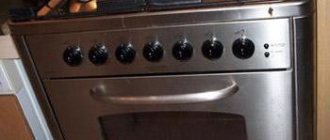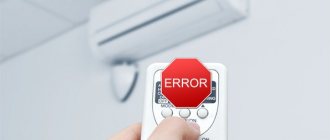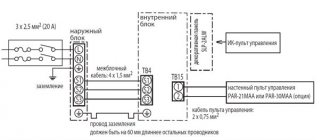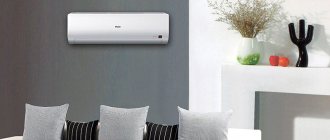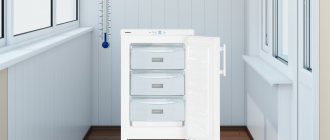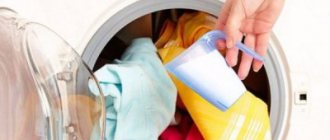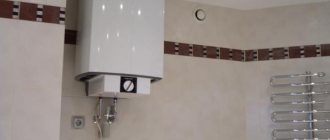When cold weather sets in, happy owners of air conditioners or their potential buyers, choosing a suitable model, begin to ask quite natural questions: is it possible to turn on the split system in rain, snow and, in general, use the device in cold weather, and whether such experiments are fraught with undesirable consequences.
Modern models of climate control equipment, with some restrictions, can be used in cold weather conditions, and a winter kit for an air conditioner will expand the performance characteristics of the split system. We will discuss these issues in more detail below.
Operating principle of household climate control equipment
The operating modes of the air conditioner, which are responsible for heating and cooling the room, operate thanks to the refrigerant, which serves as a conductor between street and home heat. In other words, household split systems themselves cannot reproduce it, but as pumps they only pump warm air into the room from the street and vice versa. Heat transfer occurs through special types of freons, and air exchange between them and the environment is carried out by air heat exchangers.
In this case, the heat performance depends both on the design of the heat exchanger, which is different for certain models of air conditioners, and on the initial temperature of the air that is passed through it.
The compressor, located in the outer casing of the device, is responsible for distributing the refrigerant throughout the device. The oil helps him with this, as it begins to thicken in the cold. As a result, the compressor mechanism operates without lubrication, and its spare parts wear out ahead of time.
Operating principle of the air conditioner
There are certain rules for operating an air conditioner in winter, failure to comply with which will lead to its breakdown, and this is often caused by water hammer. When the heating mode is turned on, the freon is heated and evaporates, however, due to excessively low temperature indicators, it does not have time to do this and the liquefied one penetrates the compressor valves.
Ambient temperature and humidity are interconnected - when one indicator changes, the other automatically changes. As a result, the volume of condensate released by the split system increases. It is removed from the device through a special drainage pipe, which, when the temperature drops greatly, becomes covered with ice inside. The condensation has nowhere to drain and it either begins to ooze out from the internal housing, or completely renders the air conditioner unusable.
It is permissible to use a household climate control device in winter, when the operating instructions for the air conditioner allow it, but in the meantime, observing all the precautions specified in it.
Problems and risks of operation
Without a heat auxiliary pump, the oil will not be able to heat up to the required temperature before turning on. The compressor parts will run dry for some time. Without lubrication, friction between parts increases and leads to wear. At certain temperatures, the viscosity of the oil increases, at which point it is ineffective. In this case, compressor failure occurs gradually and depends on how long the rubbing parts can withstand.
Water hammer is when liquid freon enters the compressor. Normally, the refrigerant should heat up and enter the compressor in a gaseous state. At low temperatures, the transition of freon from liquid to gaseous state is disrupted, which affects the operation of the valve system. When the pressure drops, less refrigerant enters the compressor than it should, the engine overheats and stops working. In this case, damage to the insulation and deterioration of lubrication may occur.
At temperatures below the recommended one, you cannot turn on the air conditioner unless it is protected.
Heating function
Heating by air conditioning in winter is possible when it is initially equipped with such a function. On the remote control this mode is usually o.
Before you start using the heating system, you need to find out the lower temperature threshold at which you are allowed to turn on this function, and the air conditioner instructions will help with this.
By default, the maximum temperature usually does not exceed 0°C. But there are devices that can cope with frosts reaching -10°C and even -15°C. This is feasible thanks to a different type of freon and the ability to adjust the operation of the compressor, available in inverter devices.
Heating mode
Is it possible to turn on the air conditioner for heating in winter when the temperature outside is at the lower limit of the permissible limit? Not recommended. The thermometer can show it with an error of several degrees, which will become critical for the split system and cause it to fail.
If the device is working, there are no error marks on the remote control, but warm air is not coming in - the system probably needs time to warm up if it is frosty outside. This usually does not take more than 15 minutes.
Air conditioning cooling in winter
Some rooms require constant cooling because they contain expensive equipment. As already mentioned, most often these are server rooms that have high heat transfer. When temperatures rise in summer, equipment can fail and disrupt the operation of the entire enterprise.
Similar equipment are magnetic resonance imaging scanners in hospitals. These devices cost several hundred thousand dollars and are very expensive to install and repair. The purpose of the air conditioner is to protect the MRI machine from breakdown, so it must work for cooling in both winter and summer. In summer there are no problems, but in winter you need to install heating for climate control equipment and observe the temperature regime.
In areas with harsh climates, it is better not to skimp on cooling electronic diagnostic equipment, since repairs will cost more than the most expensive model. The best are Japanese split systems, which turn on at temperatures down to minus 25 degrees, and with a winter set up to minus 30.
Several cooling systems are installed in special rooms so that if one fails, a spare one can be turned on.
Inverter model
When you intend to use the air conditioner as the only or main source of heat for the room in winter, you should choose an inverter model. It can be used without fear in such cold temperatures that it is impossible to turn on an air conditioner for standard household use, even the most modern and expensive models and brands - down to -18...-30°C. In addition, inverter devices are much more durable, more ergonomic and provide a smaller temperature difference.
The obvious advantages of inverter devices are reflected in their cost: the price of such air conditioners is much higher than models of household systems.
To what temperature do air conditioners operate in winter?
When using powerful equipment, you can count on intense heating of the room - up to 25 degrees, which is quite enough for a comfortable microclimate. The power of the equipment also affects the degree of cooling in winter. Good devices are able to maintain the air temperature at 18 - 20 degrees in a room with increased heat transfer.
Household split systems are designed to operate down to minus 5 degrees outside. At lower levels they refuse to turn on or freeze up during operation. Expensive brands with built-in winter kits turn on and operate for heating or cooling at outside temperatures down to minus 30 degrees.
Modification of the split system for winter operation
The winter kit for the air conditioner is equipped with devices that prevent the refrigerant from overcooling, provide heating for the drainage line and maintain the oil in a liquefied state.
The principle of its operation is as follows:
- the crankcase heater heats the oil in the compressor, which bears the main load during startup, especially in winter; a device for heating the drainage system both from the inside and outside, allowing condensate to freely exit through the drainage pipe, preventing the formation of an ice plug;
- The temperature sensor promptly detects their decrease outside and slows down the operation of the fan on the external unit of the device, so that ice does not form in it, and at the same time problems with the reduced performance of the split system are solved.
The winter kit is installed once and then performs its functions automatically - it is activated when it gets cold. Now the information about the temperature to which the air conditioner can be turned on, written in the manual for the device, can be neglected, because the winter kit significantly expands its capabilities - on average to -15°C, and in the absence of strong wind to -20°C. The temperature range can be further increased, although this is usually not an economically justifiable measure.
Operation of an air conditioner upgraded with a winter kit is permissible at a low temperature threshold, however, this is only true for the cooling mode! When heated, everything will remain unchanged, moreover, there will be a risk of water hammer.
Additionally, a low temperature air conditioning kit can sometimes cost more than the unit itself. It is cheaper and easier to install it immediately when installing the split system. It is also worth remembering that the warranty on equipment will only apply if it was installed by service center specialists, and not by the owner himself.
Operating principle of climate systems
The basic principle of operation of any air conditioning system is based on such properties of liquids as heat absorption during evaporation and its release during condensation . In all air conditioners aimed at cooling, the design is similar with minor changes patented by the brand. The principle of operation of climate control equipment, also intended for heating, is also similar.
For cooling
The operation of air conditioners is based on a closed system in which transformations of a certain refrigerant occur. Thus, the evaporator, condensation unit and compressor are connected by copper pipes, forming a refrigeration circuit within which freon with a small admixture of compressor oil constantly circulates. To cool the system, the following processes occur:
- first, freon in a vapor state is supplied from the evaporator to the compressor, while its temperature is 20 degrees and the pressure is 5 at;
- in the compressor, freon is compressed to 25 at, which causes it to heat up to 90 degrees, and then it is supplied to the condenser;
- freon in a condenser cooled by air masses turns into liquid, releasing heat, since the blowing temperature is below 90 degrees;
- then the warm liquid enters the thermostatic valve - this is a spiral-shaped copper tube, when passing through which the freon finally cools down, its pressure decreases, and part of the substance at the outlet goes into a vapor state;
- then the mixture of gas and liquid phases enters the evaporator - this element is blown with air from the room, so the freon completely turns into steam, in the process taking heat from the air.
Then all the steam is supplied to the compressor inlet, and the cycle begins again. This is how all household air conditioning systems work in the cold.
For heating
The design of air conditioning systems, which also provide heating, consists of similar components, but additionally a four-way valve is installed in it. Thanks to it, the direction of supply and movement of freon is reversed, and the functions of the condenser and evaporator are exchanged.
On a note! To heat the room, the evaporator and condenser perform the same functions as for cooling, but the indoor unit heats the air, and the external unit cools it and releases it into the atmosphere.
Using equipment in bad weather
Respecting temperature limits, the answer to questions about precipitation, in particular, whether it is possible to turn on the air conditioner in rain or snow, is unequivocal - of course, yes. The external module of the device can only be damaged if icicles and ice fall on it. Installing a special metal canopy over it will solve this problem.
It is important to make sure that the temperature outside meets the acceptable threshold stated by the manufacturer, or that a low-temperature kit is installed, before testing the air conditioner in winter or installing it. Excessively cold weather should be a reason to postpone installation of equipment or its first start-up until the weather warms up.
Operating temperature conditions
The instructions supplied with the climate control equipment set the operating temperature range from -5 to +20 degrees (the manufacturer will definitely mention in the documentation how many degrees it should be “overboard” at the moment of switching on). But is it worth using an air conditioner in winter as a heater at temperatures below the stated values?
To answer this question, it is worth remembering the operating features of the device. At high subzero temperatures, the device will simply begin to lose its declared thermal performance. Running an air conditioner in winter can have the following consequences:
- thickened oil in the refrigerant;
- dry friction of parts;
- worn out compressor;
- failure of equipment.
Preservation of equipment for winter
If the climate control equipment is not planned to be used during cold weather, then it is necessary to prepare the air conditioner for winter, i.e., preserve it.
On a fine day, when the thermometer does not drop below +16°C, you need to turn on the equipment in ventilation mode for 1.5-3 hours so that all the moisture in the heat exchanger of the indoor module evaporates. If it is colder outside, it is recommended to use the heating mode instead of ventilation.
In addition, it is necessary to clean the split system filters from dust and dirt. You need to remove them by opening the front panel of the device, wash them with running water and soap, dry them and put them back.
Disconnect the split system from the network and remove it from the remote control to avoid battery oxidation.
It is not recommended to cover the outdoor unit of the air conditioner with moisture-resistant materials, since due to accumulating condensation, as well as the inaccessibility of solar heat, mold will soon form on the outdoor module.
Disadvantages and disadvantages of winter heating
Now let's talk about the disadvantages. Don’t think that by choosing a machine with the maximum COP, you will get an ideal heating system that outperforms all others.
A significant drawback of all air conditioners is their noisy operation. There is no escape or relief from the noise.
This is especially annoying in the bedroom. Fortunately, modern inverters have managed to reduce the noise level to 20-30 dB. It's like the rustling of leaves in a slight wind.
In addition to noise, do not forget about the vibration of the external unit. If you have already decided to use air heating in winter, then forget about mounting the external unit on the wall.
Place it only at the bottom on a separate stand with a snow guard.
In summer, when working in the cold, the casing is removed, otherwise the unit will “suffocate.”
Many people place the external unit in the basement of the house. As a result, you get a higher COP, a free refrigerator, and no influence of precipitation. However, the question remains with temperature changes and how they will affect the foundation.
In addition, do not forget about the amount of liquid during defrosting. Over the course of the entire winter season, a small swamp can easily form in your basement.
It is not profitable to use air conditioners for heat in houses with a large area and a large number of rooms isolated from each other. Forget about closed doors with this heating.
To heat two-story cottages, you will most likely need powerful semi-industrial units that cost several thousand dollars. Separate blocks will have to be installed on each floor.
In houses up to 120m2, you can get by with two blocks with a capacity of 9000-12000BTU. In general, with an open plan, count on at least one indoor unit for every 40-50 m2.
At the same time, you still won’t feel the most comfortable heating of the air. Although a thermometer hanging at eye level will show +23C, an unpleasant chill in your legs, especially in distant rooms, will always haunt you.
And for small children this is very critical.
Heated floors are a great improvement over air conditioners in this regard. So, if you have a young family, then most likely you should not switch to heating with air conditioning. If your children are adults or you live alone, then you can safely experiment.
Another disadvantage is that in the absence of a backup heating option, a sudden failure of the external or internal unit will lead to freezing of the entire house.
Of course, you can replace air conditioners with convectors for a while, but what should you do if the electricity is cut off in cold weather?
Buy a powerful generator and switch to a backup source?
But this is again extra costs, unnecessary hassle and a waste of time. Therefore, think through such moments in advance and have at least some temporary alternative.
However, this type of heating is becoming increasingly popular. In general, the main complaints about the unprofitability and unprofitability of heating with air conditioners come from two categories of people:
- who is engaged in the sale, adjustment and installation of traditional heating systems (gas, solid fuel, electric boilers)
- those who bought themselves a cheap Chinese brand
Inexpensive models consume two to three times more than “Japanese” ones with the same thermal power. And they heat normally only when it’s outside down to -5C (the Japanese up to -30C).
Plus they make noise like steam locomotives, and in the end they break down after just a couple of years.
Expensive brands have a MTBF of up to 25 years. Accordingly, the “Japanese” has an average winter COP of 3-4, while the “Chinese” barely reaches 1.5.
To summarize, we can safely say that heating with air conditioning, with a competent approach, has the right to life and can pay for itself in just a few winters.
Even if after this time one of the units fails, replacing it will still be cheaper than connecting, installing, maintaining and operating most traditional heating systems.
Summarize
From the information above, it becomes clear whether it is possible to turn on the air conditioner in winter, and also when it is not justified to do so. It is better not to turn on an air conditioning device equipped with a heating function in cold weather in this mode, and if used, then strictly to the temperatures specified in the equipment manual. This will prevent premature wear of the compressor and damage to the device.
A win-win option in houses that are planned to be heated in winter on their own would be to install an inverter model.
Before using the air conditioner for cooling in winter, you should carefully study the manufacturer's recommendations. But there will not be such strict restrictions if the device is equipped with a winter kit.
For information, we suggest watching a video on installing a winter kit on an air conditioner:
How to operate an air conditioner in winter
Using an air conditioner in winter is possible under the following conditions:
- For the device to operate safely, it must be used for its intended purpose - to cool the room. This reduces the risk of breakdown.
- A winter kit, preheating compressor and drainage system must be installed. Even in the off-season, the temperature at night can drop 1 - 2 degrees below zero, so it would be a good idea to protect the device if it is sometimes turned on for heating.
- The device must have a heating function as such in order to turn it on in warm mode. In hot countries, split systems are designed mainly for cooling, so all questions should be clarified with sellers when purchasing.
Companies that manufacture cooling systems are directing their efforts to design a device that can work effectively for cooling even in the most severe frosts. To heat a living space in Siberia, where frosts reach 40–50 degrees, any air conditioner will not even turn on, let alone maintain performance.
It is recommended to operate cooling systems in specialized rooms with expensive equipment alternately. The equipment is configured to automatically switch from one air conditioner to another so that they have the opportunity to rest and cool down. During periods of heavy loads, several split systems can operate simultaneously in the server room, so all outdoor units must be equipped with heating elements for the compressor and drainage. The winter kit heats the oil first, so that the rubbing parts do not wear out, and keeps the condenser tube warm so that the liquid in it does not freeze.
How to avoid colds?
You can often hear that air conditioning, especially in summer, is the cause of colds. This mainly happens due to failure to maintain the temperature difference indoors and outdoors. But besides this, there are two more factors that can cause colds.
The first is air flows; even short-term exposure to a powerful cold air flow can lead to a cold. The easiest and most obvious way to avoid this is to not be underneath it. If this cannot be avoided, for example, your workplace is located there, then it is worth installing a protective screen.
The second reason is less obvious - pathogenic bacteria. The air conditioner continuously circulates the same air in the room. And to ensure that dust and other small particles do not get clogged into important parts, filters are installed.
It is recommended to clean them at least once a year. In addition to taking care of your health, this will significantly extend the life of the air conditioner.
You can clean the filters yourself. To do this, you need to remove the cover of the indoor unit, carefully remove them and rinse them under water with cleaning agents.
If you do not clean them and change them in time, the filters become a breeding ground for germs and bacteria.
Differences in the design of frost-resistant air conditioners
Why can one air conditioner be turned on at 30 degrees below zero, while it is undesirable to start others at -50C? The answer is simple: structural features and configuration. The cost of a split system is not always directly proportional to its capabilities, and therefore it is useful to know what effective design solutions exist.
To understand whether it is possible to turn on a particular air conditioner for heating in winter, or whether this is dangerous for the device, pay attention to such details.
Firstly, a low temperature kit should be built in from the factory to prevent cold starts of the compressor and condensate freezing.
As we have already mentioned, inverter models are preferable in winter, since their compressor does not stop when the set temperature in the room is reached, but only slows down. This means that it will not cool down every time and start up with an overload, and it is also more profitable in terms of energy consumption.
The heat exchanger of the outdoor unit can be enlarged so that the freon inside has time to completely evaporate and absorb maximum heat from the air before entering the compressor.
The large area of the heat exchanger allows the split system to operate efficiently even with a small difference between the boiling temperatures of the refrigerant and the air outside
There are also double-circuit heat exchangers in which the performance is regulated by connecting an additional freon circulation circuit. The external unit and heat exchanger may include additional casings and heat accumulators to use the energy generated by the operating equipment.
A high-power compressor compresses the gas more strongly, heating it to higher temperatures. In industrial models, there are also scroll compressors that are not afraid of the ingress of liquid freon.
The refrigerant itself may have different properties. Cheap and widespread R-22 evaporates at -400C, while being able to absorb heat of 233 kJ/kg. For comparison, the newest R-32 evaporates at -51.70C, and is capable of retaining heat up to 390 kJ/kg.
This means that under the same conditions, the second one will heat up faster and more efficiently in the heat exchanger, and the air conditioner or split system will operate with lower energy consumption and higher efficiency.
The type of oil that lubricates the compressor also depends on the type of refrigerant. R-22 works with mineral oil, which maintains an acceptable viscosity down to -50C, and R410A and R32 - with synthetic oil, which is stable down to -70C. It would seem that the difference is small, but taken together with other factors it is significant.
Mitsubishi Zubadan is the most famous series of heat pumps that operate in winter at temperatures down to -250C. They cost 3–5 times more than split systems, which can heat only in slight frosts
The more of the listed upgrades the air conditioner has, the lower the temperature it can operate at. However, for many inverter models you may not even know the maximum permissible temperature: the electronic control simply will not start the system if it is too cold outside.
Ventilation of the room with air conditioning
There is one more important thing to consider. The air conditioner does not interact with the air outside in any way. It circulates the same air around the room, and the external installation is only responsible for removing excess heat from the room.
Only refrigerant moves between the indoor and outdoor units of the air conditioner, usually freon. It removes excess heat from the room, but does not renew the air
Air exchange is also important to maintain comfortable indoor conditions. And if you do not ventilate the room for a long time, the oxygen level will decrease and the level of carbon dioxide will increase. Of course, this is not fatal, but the lack of oxygen can make you feel tired and drowsy.
Before ventilating the room, be sure to turn off the air conditioner. Open windows and, if possible, doors. This creates a draft, but allows the air to renew itself very quickly. It is advisable that at this moment there is no one in the room, especially children. If there is no way to vacate the room, then it is better to limit yourself to windows only.
We said above that when the air conditioner is on, it is necessary to close the windows, and when ventilating, turn off the air conditioner. Let's figure out why this needs to be done.
Modern air conditioners do not blow at the set power all the time. They cool the room to a set temperature, after which they begin to work to maintain it. This allows you to wear out the equipment and filters less quickly and save energy.
If you open the windows when the air conditioner is on, active air exchange will begin to occur in the room. Hot air from the street will replace the cooled air in the room. In this case, the air conditioner will work at full capacity, actually cooling the street.
Powerful models may be able to maintain the set temperature even with the windows open, but this will lead to rapid wear and tear.
If you forget about it once, then nothing bad will happen. However, repeating this on a regular basis, there is a high chance of being left without air conditioning and with a huge electricity bill.
We also recommend reading our other article, where we described in detail the principle of operation of the air conditioner.
Efficient and economical use
We figured out what optimal temperature an air conditioner should maintain in the summer. Setting up an air conditioner and enjoying comfort is quite simple, however, it can cost a pretty penny. Climate control equipment consumes a large amount of electricity.
And if you don’t want your electricity bill to increase several times, then you should follow a few simple rules:
- Curtain the curtains. This will protect the room from heating by the sun, which means less energy will be needed to cool the room.
- Set the air flow to the minimum speed. Yes, in this case the room will cool down a little slower, but 15-20 minutes will definitely not be critical. Be sure to close windows and doors indoors.
- Adjust the angle of the horizontal blinds parallel to the floor. In this case, the cooled air will fall down and the hot air will rise to the top. This will allow you to quickly bring the room to the desired temperature.
If your model does not have the ability to adjust the blinds, then install a protective screen directly under the air conditioner.
In this case, the air flow will dissipate immediately, which will increase the efficiency of the air conditioner.
For maximum efficiency, the protective screen must be installed close to the indoor unit. But at the same time it should not interfere with the movement of horizontal blinds
The cost of protective screens is small - from 1000 rubles. But you can make it yourself from plexiglass or plexiglass.
Why is it important to observe the temperature difference?
Modern climate control equipment works wonders. Outside the window it may be incredibly hot at 40 degrees, but indoors the air conditioner can maintain a comfortable coolness of 20 degrees.
But it is worth considering that sudden temperature changes of more than 7 degrees can cause ARVI with further exacerbations, even pneumonia. If you walk from a hot street into a cool room with air conditioning, you will feel comfortable. However, the risk of getting sick will increase several times.
If you stay indoors all day, maintaining the temperature difference can be neglected. But being under a cold stream all the time is not recommended.
Therefore, it is necessary to set the temperature of the air conditioner in rooms where people often enter and exit, taking into account the above difference.
If we are talking about office space, then failure to comply with this simple rule can lead to all employees going on sick leave.
The principle of operation of an air conditioner for heating
Initially, air conditioning was intended only to cool the room. But today some models are capable of heating a room. This is achieved through the joint work of the refrigerant, compressor, condenser, evaporator and indoor/outdoor unit.
So, the refrigerant in the form of gas goes to the compressor. From there it heats up and enters the condenser compartment. There, the refrigerant becomes water and enters the evaporator compartment of the indoor unit. It is converted from liquid to gas and removed from the room through the external unit.
Then it again enters the compressor compartment, and work begins again. The heating mode itself creates a valve that rotates the air conditioner with the evaporator in places under normal operating conditions.
